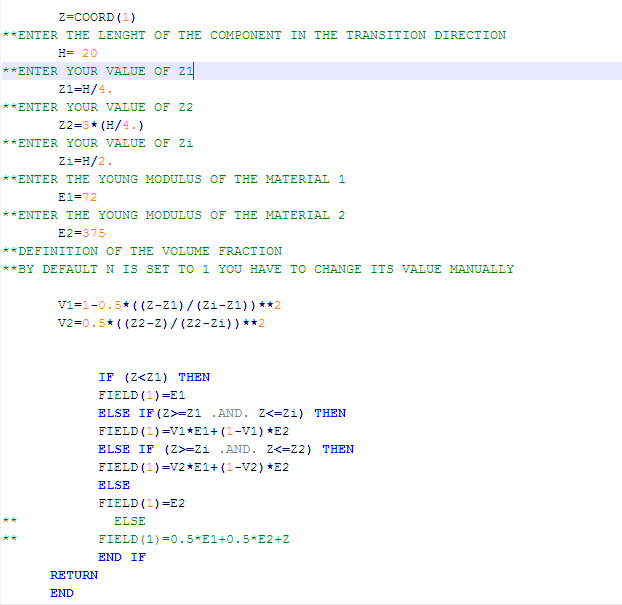

- #Stress concentration factor in abaqus full#
- #Stress concentration factor in abaqus software#
- #Stress concentration factor in abaqus free#
#Stress concentration factor in abaqus free#
It has been revealed that free mesh enables to obtain a satisfying precision of the calculations. It has been revealed that precision of numerical calculations for stress concentration factor depends on morpholology of the mesh located near the notch. For the purpose of the analyses, free and mapped meshes for coarse geometry and mapped meshes for modified geometry with one and two subareas were assumed.
#Stress concentration factor in abaqus software#
Two-dimensional FEM linear elastic analyses were performed in the ANSYS software environment. Both analysed the notchs generally assumed as shallow notch K t ≈1.7 and sharp notch K t ≈2.8. The calculations were performed for flat bars with opposite U-shaped notches and for round bars with V-shaped notches. Stress concentration factor K t was assumed as the characteristic value determined during the calculations. The researches considered the problem of mesh forming for numerical analyses of notched elements. This approach helps in reducing product development cycle time as the dependency on experimental and existing conventional calculation efforts have been reduced. The approach can compute accurate results for a wide variety of practical cases of geometry and loading conditions. The results indicate FEA based ANSYS approach is an effective way for computation of stress concentration factor (Kt). The Kt is evaluated for many practical problems of aerospace industry. The proposed approach is benchmarked with data available in the literature. In this paper an approach for computation of the stress concentration factor (Kt) using ANSYS is proposed. Commercial FEM tools such as ANSYS are widely used in automotive and aerospace industry for diverse structural analysis problems. The information and methods available in literature is inadequate to compute Kt for many complex structural components. However, the data available in available literature do not cover all cases encountered in product development. The Kt values are usually taken from handbooks or other public literature. Further research is needed to confirm the findings.In the fatigue analysis the peak stress at the critical region of a structure is computed as a product of nominal stress and the stress concentration factor (Kt). This anomaly may be due to the placement of strain gauges. Although the trend of SNCF calculated from the experiments is found to be in reasonable agreement with the numerically obtained trend, the experimental results are, in general, found to be higher than those obtained from the FE analysis. Based on the strain data, SNCF was calculated at various stages of loading. Apart from the measurement of actuator load and displacement data, strains were measured at several locations through micro strain gauges. A monotonic loading scheme was used for applying in-plane bending through a displacement control scheme.
#Stress concentration factor in abaqus full#
Further, a full scale tubular to a girder-flange joint was fabricated and tested in Structural Engineering Laboratory at IIT Kanpur. The SCFs and strain concentration factors (SNCFs) are then determined at the weld toe using linear extrapolation method. The FE results show that the stresses are very high on the brace near the weld-toe and gradually decrease in the direction away from the weld. In this study, at first, a finite element (FE) analysis has been performed to predict the location of hot spot stresses in a fillet welded tubular to girder-flange joints under in-plane bending. For evaluation of SCF, in current practice, the ‘hot spot stress’ method Usually, at the locations of high stress, cracks initiate and grow leading to a fatigue failure. The stress concentration, especially in the welded joints of these structures, is a complex phenomenon. For fatigue design of such joints, stress concentration factors (SCFs) are required. Tubular to a girder-flange joints are widely used in various applications.


 0 kommentar(er)
0 kommentar(er)
